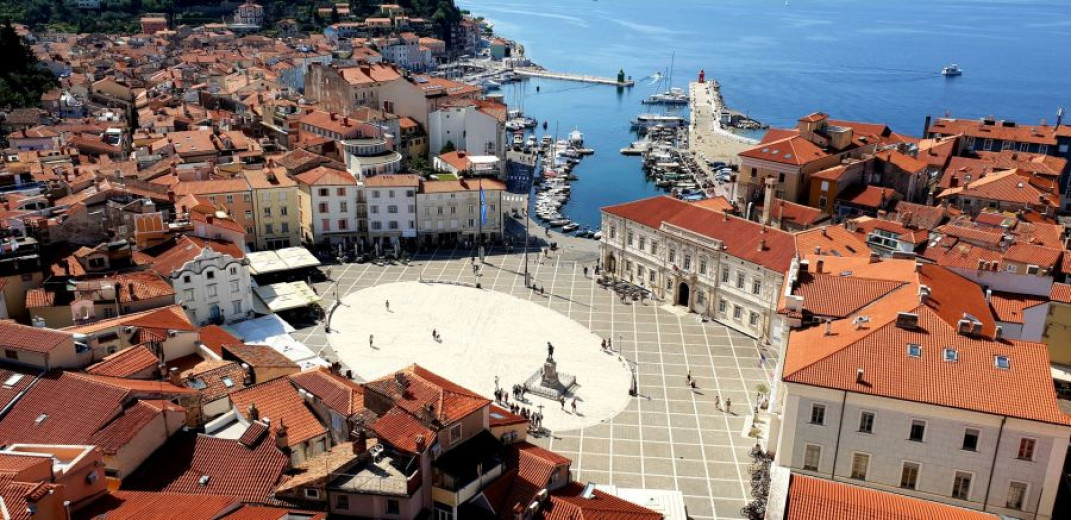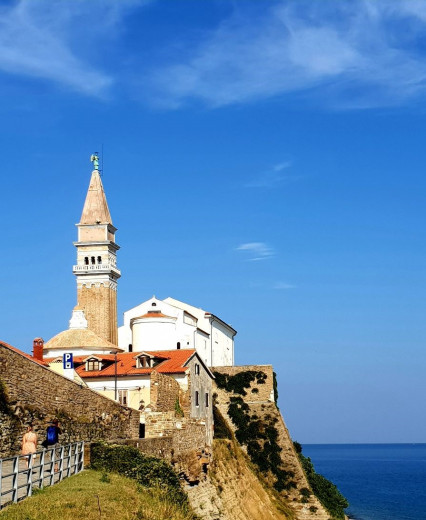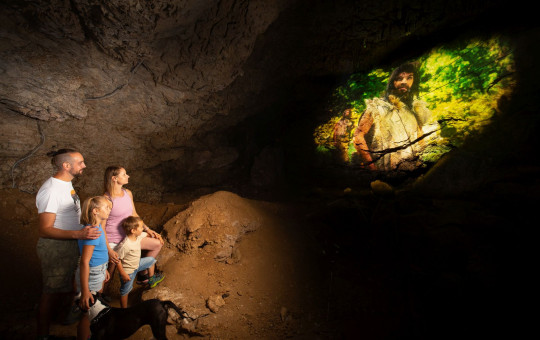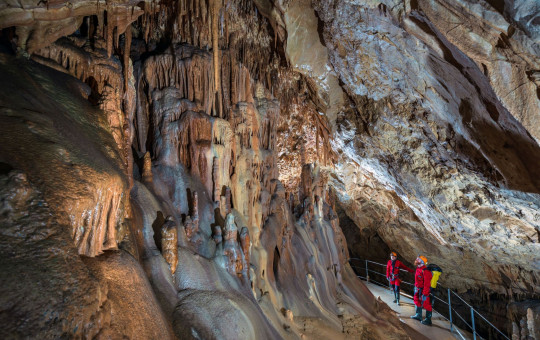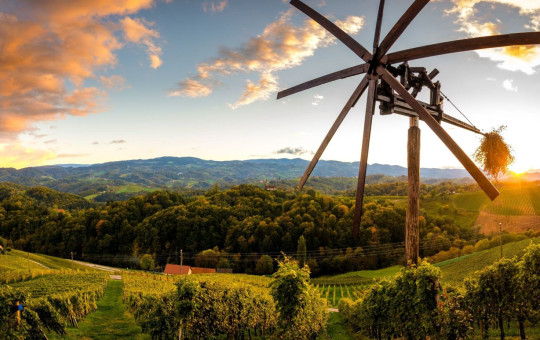Date: 17. October 2019
Time to read: 5 min
Besides Bled and Ljubljana, Piran is certainly the most photographed city in Slovenia.
In addition to a romantic view, the eyecatching image of this medieval town provides an instant insight into the extremely diverse architectural history of the Slovenian coast. According to historical sources, this area has been inhabited since prehistoric times.
Piran - an ancient city
The location of today’s Piran was first mentioned as an ancient city in the seventh or eighth century. The settlement, which was then formed on the pointed tip of the Madona peninsula, spread to the slope where the Church of St. George stands today.
In its long and varied history Piran was ruled by different authorities, but most of the time it was under the Venetian Republic. In the second half of the eighth century, the part of Istria with Piran passed from the Byzantine to Frankish authority, later on around 840 it was connected to the Kingdom of Italy, and in 952 it was included in the German Empire. After 1209, Piran moved under the Patriarch of Aquileia. At the time, Istrian cities felt the influence of Venice, yet they developed independently and formed their own administration and legislation. Piran acquired its statute in 1274, and from 1283 on was under the Venetian rule, which lasted until
1797 when the Republic collapsed. Due to its strategic position and fertile hinterland with salt pans, Piran was extremely successful in trading with Venice. According to some sources, Piran supplied Venice with 1/3 of all that city’s salt reserves.
St. George's church and its bell tower
The influence of Venice did not only foster an economic boom in Piran, but was also evident in the architectural and spiritual life of its inhabitants. Historical sources state that Piran had a monastery, more than 23 churches and numerous chapels. Throughout the centuries, the buildings and their purpose have changed, and now there are only 10 preserved churches in the town. This is still a high number, however, given the small size of the area and the density of the population.
The largest and most famous is the Baroque church of St. George, with a bell tower and a baptistery, and which reigns on a hill within the walls of the town.
The slope with the church complex was fortified with supporting arches somewhere from the middle of the 17th century to the beginning of the 19th. The beginnings of the construction of the Baroque church date back to the year 1595, when the Gothic church that stood in its place underwent a thorough renovation, while the old bell tower was demolished and a new separate-standing tower built. Its design was based on the Renaissance bell tower of St. Mark’s in Venice. Piran’s tower is almost half the size of the Venetian one, but if we consider the altitude of the hill on which it stands, we can almost say that both are equally high. The Piran bell tower is also older than the Venetian one, because the original one in St. Mark’s Square collapsed in 1902 due to static errors.
Placing a 3.7 metre tall statue at the top of the tower was surely no easy task in 1769. In 1908, when it was over a century old, it was removed, repaired and repositioned on an iron axis, which rotates in an iron bed, turned by the wind.
When the angel shows its wings to the city and looks towards Trieste (Italy), the bora wind is blowing and it means the weather will be nice. When it points its finger to the city, as in warning, it means that rain or storms are approaching.
Some may wonder why Archangel Michael and St. George are joined together in Piran’s most prominent church. A logical answer is found in Christianity itself: both the saint and the archangel are fighters against evil, and our ancestors seem to have believed that the city needs two powerful spiritual protectors. The church was dedicated to Saint George in 1344, when it protected the townspeople and the city from a severe storm. Several centuries later the bell tower was dedicated to Archangel Michael. In addition to the statue and the imposing bells in the tower, there is also a wall clock that was added to it later. From this year onwards, you can also climb up to the top of the bell tower on a renovated wooden staircase with a very special story about 15 angels.

